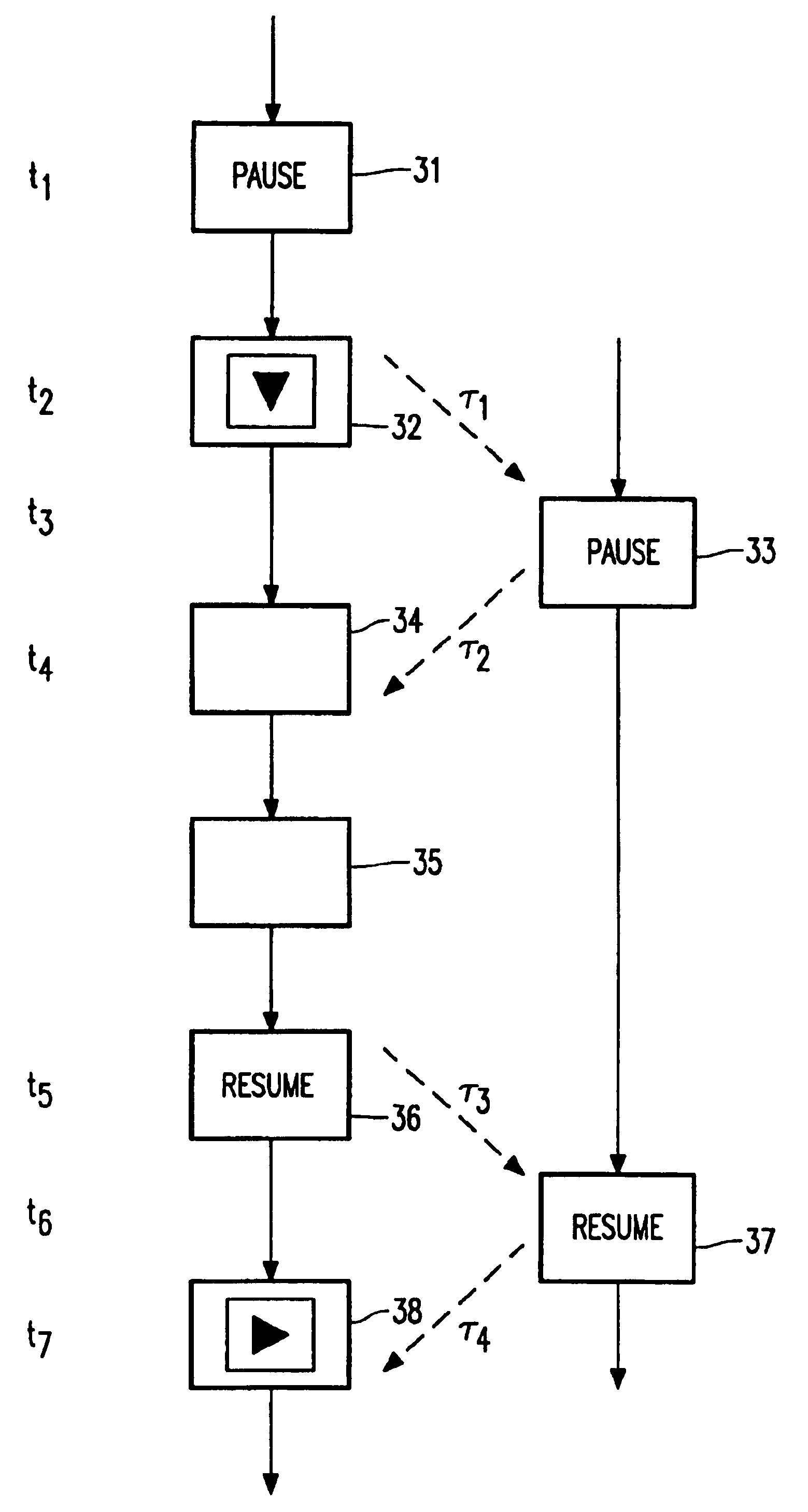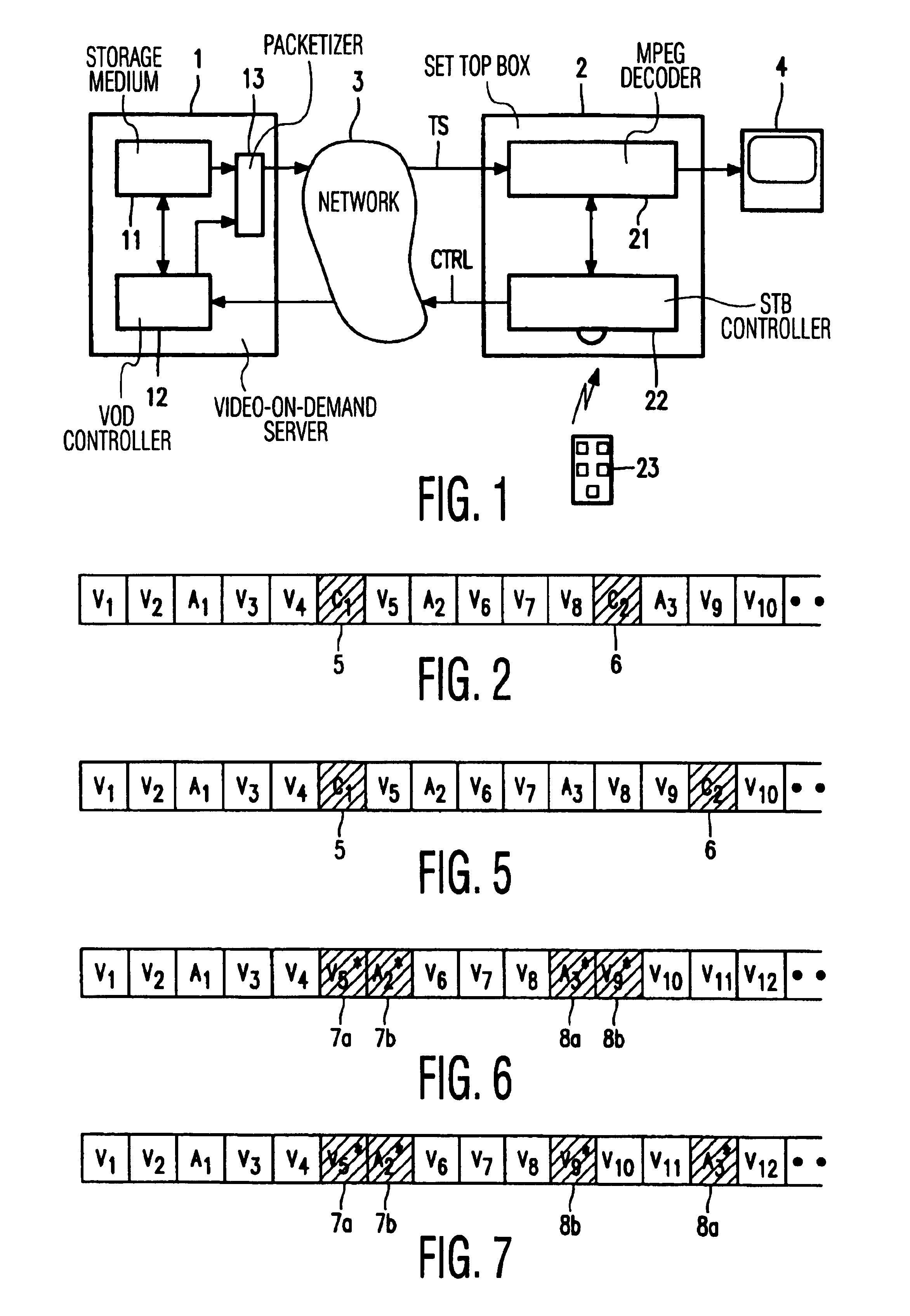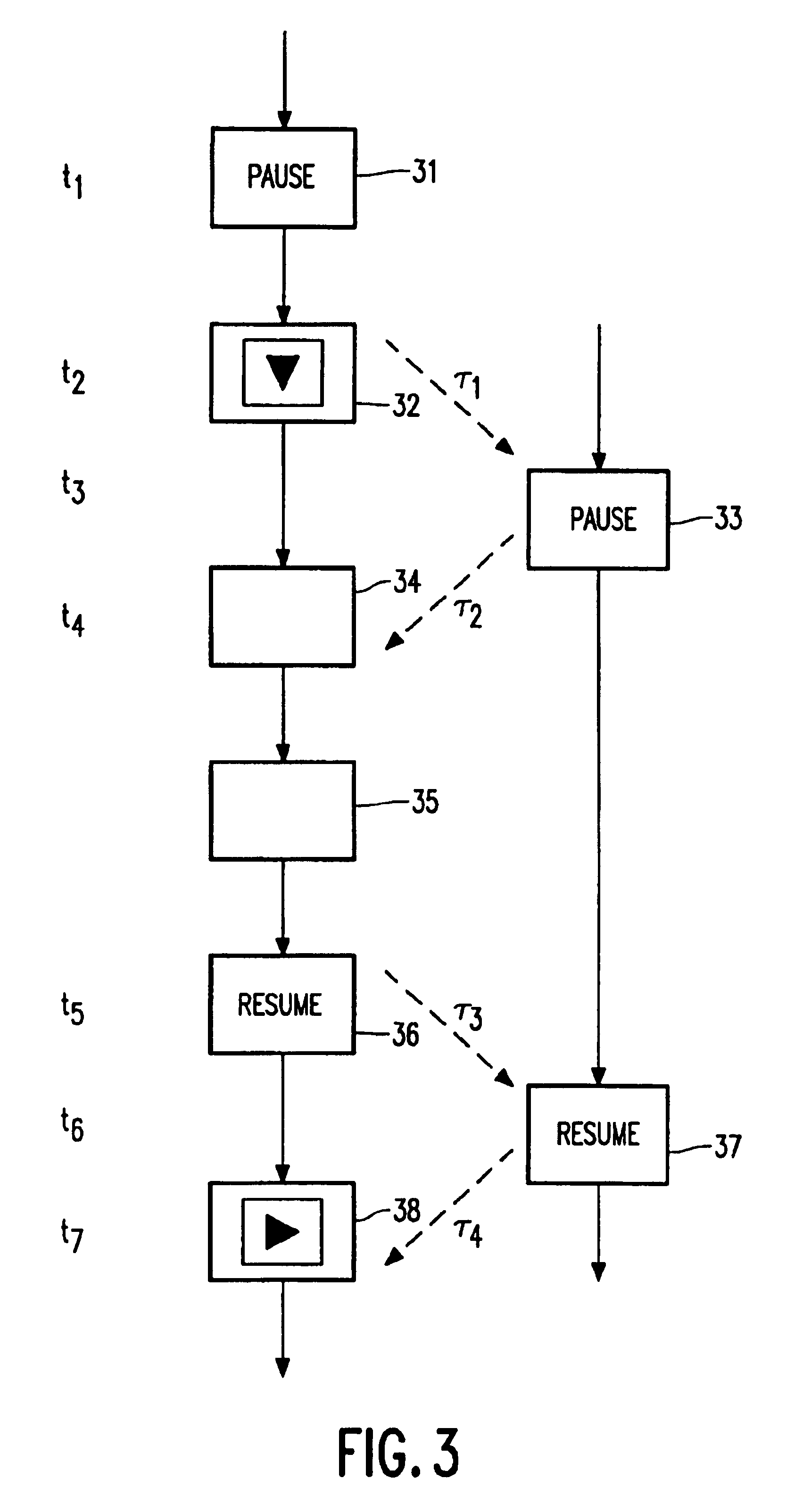Method of transmitting and receiving compressed television signals
a television signal and compressed technology, applied in the field of compressed television signal transmission, can solve the problem that the server cannot determine the stream position exactly
- Summary
- Abstract
- Description
- Claims
- Application Information
AI Technical Summary
Benefits of technology
Problems solved by technology
Method used
Image
Examples
Embodiment Construction
FIG. 1 shows a system comprising a Video-On-Demand (VOD) server 1 and a set top box (STB) 2 connected via a network 3. The VOD-server comprises a storage medium 11 and a VOD-controller 12. The STB comprises an MPEG decoder 21, an STB-controller 22 and a (remote) control unit 23, and is connected to a reproduction device 4. User commands from remote control unit 23 are applied to STB-controller 22 and, as far as they require actions to be taken by the server, transmitted to the VOD-controller 12 via the network 3 as a control signal CTRL. A selected television program is transmitted from the server 1 to STB 2 in the form of an MPEG Transport Stream TS.
A plurality of television programs is stored on storage medium 11 which is usually an array of hard disks. From the STB point of view, the server behaves as a remote video recorder. The stored television programs can be played back at various speeds, paused and resumed. More particularly, the server can be instructed to playback the pro...
PUM
 Login to View More
Login to View More Abstract
Description
Claims
Application Information
 Login to View More
Login to View More - R&D
- Intellectual Property
- Life Sciences
- Materials
- Tech Scout
- Unparalleled Data Quality
- Higher Quality Content
- 60% Fewer Hallucinations
Browse by: Latest US Patents, China's latest patents, Technical Efficacy Thesaurus, Application Domain, Technology Topic, Popular Technical Reports.
© 2025 PatSnap. All rights reserved.Legal|Privacy policy|Modern Slavery Act Transparency Statement|Sitemap|About US| Contact US: help@patsnap.com



